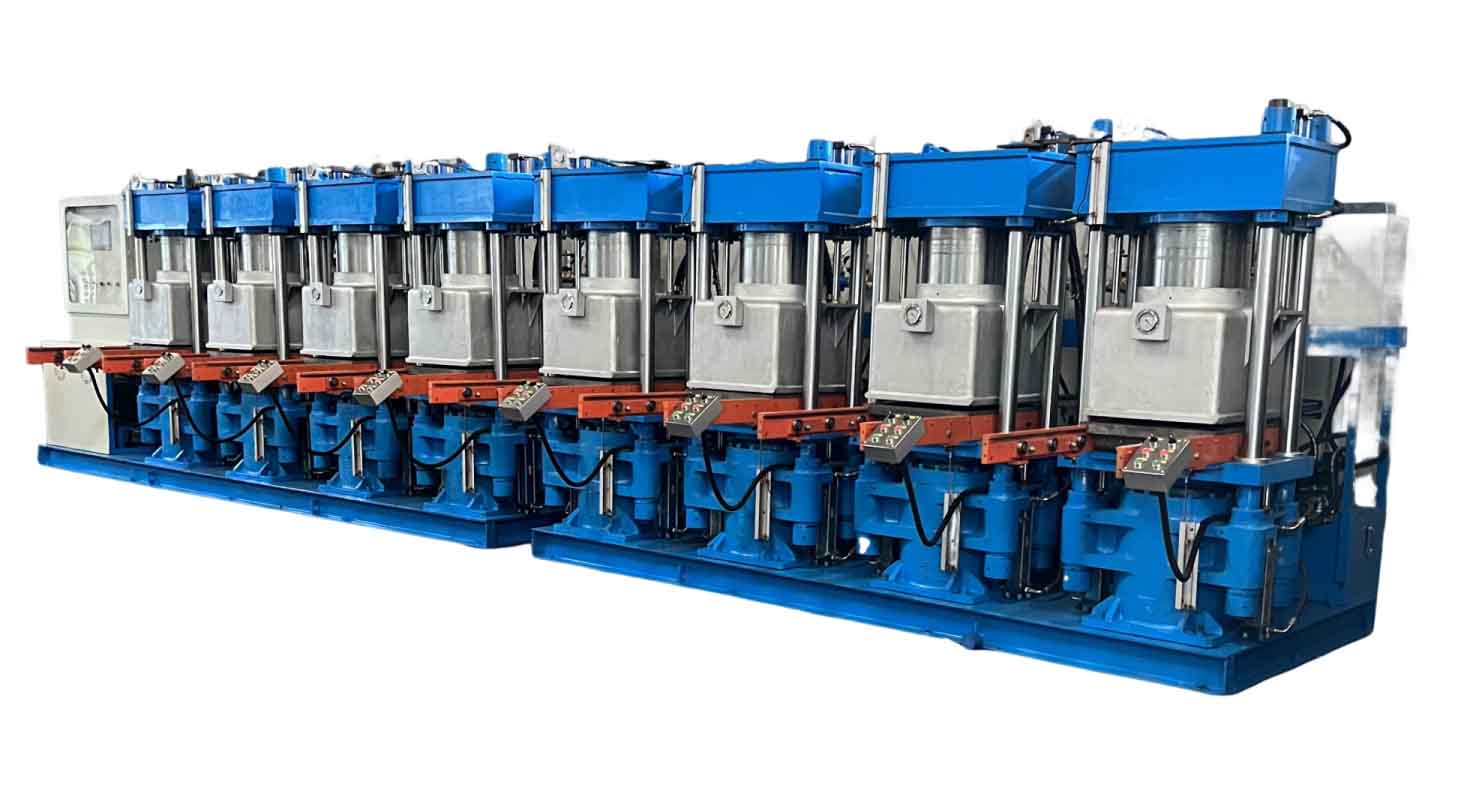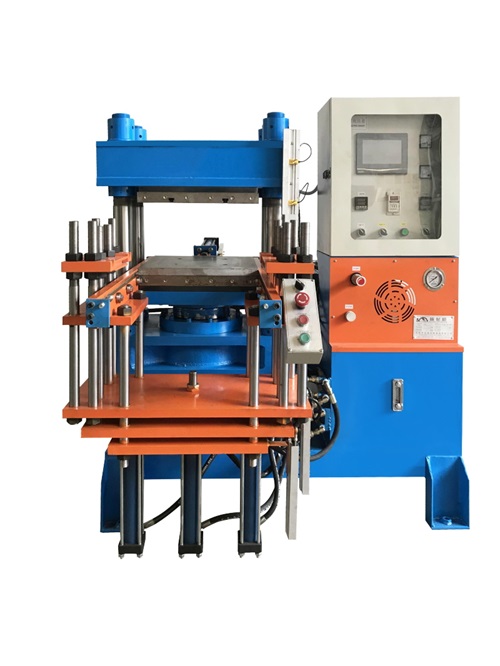
Customization of rubber molding machines involves modifying or designing these machines to meet specific production needs, materials, or product requirements that might not be fulfilled by standard off-the-shelf machines. Rubber molding machines are used in various industries to create rubber products through processes such as injection molding, compression molding, transfer molding, and more.Customizing rubber molding machines requires a multidisciplinary approach involving mechanical engineering, materials science, and manufacturing expertise. It's essential to collaborate closely with professionals who have experience in rubber processing, machine design, and industrial automation to ensure a successful customization process.
Vulcanizing Machine for Sale
Our company has super independent research and development capabilities, is a powerful manufacturer with more than 20 years,produces 50 tons, 63 tons, 100 tons, 150 tons and 200 tons of vulcanizing machines, and supports customized non-standard vulcanizing machines. Vulcanizing machines with large table, high stroke and double-layer models can be customized according to your needs.You can contact us to consult related products and get quotations

Vulcanization molding machine customization process:Identify the specific needs and challenges of your production process. Consider factors like the type of rubber compound, product dimensions, production volume, curing time, and any unique requirements.Collaborate with engineers to conceptualize the modifications needed for the vulcanization machine. This may involve changes to the heating system, pressure application, mold design, controls, and overall machine structure. Create detailed design plans using CAD software.Choose appropriate components for the customization. This could include selecting heating elements, molds, pressure systems, sensors, and controls that align with the new design and production requirements.Fabricate or modify the machine according to the design specifications. This might involve machining, welding, adding new components, and integrating additional systems.Integrate the new components and modifications into the existing machine. Test the customized machine using sample rubber compounds and molds to ensure that it operates as intended.
Features of rubber molding equipment:
1. One-piece cast frame: The machine frame adopts UG software and PRO-E3D analysis aided design, and is integrally cast to achieve high rigidity, precise structure and long service life
The tripod is designed with a square steel beam structure to ensure the stability of the machine
2. High-precision heating plate: The thickened heating plate adopts deep hole processing, and is subjected to carburizing heat treatment, absorbing the principle of heat flow, and the temperature accuracy is high and uniform
The hot plate is processed by computer gong CNC, and the inlet and outlet modules are carburized and finished by grinding and nitriding. The wear time is long, it is not easy to deform, and the plane precision is high.
3. Special oil circuit design: Special oil circuit design, oil circuit has no impact during operation, low noise, good stability, fast entry and exit, rising and falling speeds, which improves efficiency and reduces energy consumption
4. High and low voltage conversion design: specially designed high-speed circuit, so that the slow-speed clamping switch is stable and the speed can be adjusted to adapt to different types of molds
5. Independent exhaust circuit design
The independent exhaust circuit design can adjust the exhaust time and the number of exhaust gas, so that the exhaust accuracy can reach 100%.
A rubber injection molding machine injects molten rubber material into a mold cavity, where it cools and solidifies to take the shape of the mold. This process is efficient for producing precision rubber components with intricate details.
Compression molding machines apply heat and pressure to rubber compounds in a mold, suitable for manufacturing large and complex rubber parts. This method ensures uniformity and consistency in the final product.
While both methods involve molding rubber, injection molding is more suitable for intricate designs, whereas compression molding is effective for larger and simpler rubber products.
Rubber transfer molding machines are versatile and find applications in producing various rubber products, including gaskets, seals, and electronic components. This method allows for precise control over material placement.
Selecting the appropriate rubber molding machine depends on factors such as the type of rubber material, desired product complexity, production volume, and cost considerations. Understanding these factors ensures optimal machine selection.
Regular maintenance is crucial to ensure the longevity and efficiency of rubber molding machines. This includes cleaning, lubrication, and inspection of key components to prevent wear and tear.
Operators should adhere to safety guidelines, including proper use of personal protective equipment, awareness of machine-specific risks, and following established protocols to avoid accidents and injuries.
Identifying and addressing common issues such as material flow problems, mold misalignment, or temperature fluctuations is essential for maintaining the quality and efficiency of rubber molding processes.
Efficient production optimization involves streamlining processes, minimizing downtime, and utilizing advanced technologies. Implementing these strategies enhances overall productivity in rubber molding operations.
Eco-friendly practices in rubber molding include the use of sustainable materials, energy-efficient machinery, and waste reduction initiatives to minimize the environmental impact of rubber manufacturing processes.
Advancements in rubber molding technology include the integration of automation, digital monitoring systems, and smart manufacturing practices to enhance precision, reduce waste, and improve overall efficiency in production.
Identifying and rectifying defects such as air traps, voids, or flash in molded rubber products require thorough inspection, adjustment of process parameters, and adherence to quality control measures.
Implementing stringent quality control measures, including dimensional checks, material testing, and regular inspections, ensures that the produced rubber products meet the required specifications and standards.
Rubber molding machines play a vital role in the automotive sector, producing various components such as seals, gaskets, and tires. The precision and reliability of these machines contribute to the overall quality of automotive products.